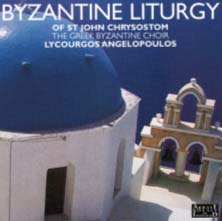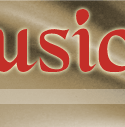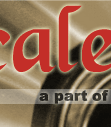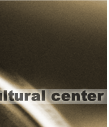
"Saint John Chrysostom" | "The divine Liturgy" | ΕΛΛΗΝΙΚΑ

"The Divine Liturgy of Saint John Chrysostom"by Lycourgos Angelopoulos
 THE DIVINE LITURGY of Saint John Chrysostom falls under two broad headings: the liturgy of the catechumens and the liturgy of the faithful. Today, of course, there are no catechumens such as there were in past times, or at least their number has been greatly reduced, and it is for that reason that some of the ekphoneses (litanies) from the first heading are usually omitted.
THE DIVINE LITURGY of Saint John Chrysostom falls under two broad headings: the liturgy of the catechumens and the liturgy of the faithful. Today, of course, there are no catechumens such as there were in past times, or at least their number has been greatly reduced, and it is for that reason that some of the ekphoneses (litanies) from the first heading are usually omitted.
The Divine Liturgy of Saint John Chrysostom is made up of the following components:
The Blessing.
The Great Synapse (litany) by the priest with Kyrie eleison responses from the choir.
The three stanzas of the antiphons : 1 st stanza Ps. 102 (103), 2nd stanza Ps. 145 (146), 3rd stanza, the Beatitudes (Math. V, 3-12) interspersed with troparies on the occurent degree of the octoechos (in this case, troparies on the first degree).
The Small Entry (Introit) with the gospel; troparies: apolytikion and kondakion.
The Trisagion (acclamations taken from Isaiah 6, 3 : Lord most holy, Lord most powerful, Immortal Lord, have mercy upon us).
The Prokimenon (verse put before the psalm for which it serves as a response and preceding the epistle) and reading of the Epistle, Alleluias interspersed with verses from the psalms and readings from the gospel.
The Hymn of the Cherubims, the Great Entry during which the transfer takes place of the Holy Gifts of the Prothesis (the place of preparation of the gifts) to the altar.
The Litany of the Offertory, the Kiss of Peace and the Symbol of Faith.
The Anaphora (Eucharistic Prayer) with Sanctus and the prayer of Thanksgiving: "We praise thee..."
The Lord's Prayer.
The Kinonikon (communion chant).
The Dismissal Hymns.
The series of Kyrie Eleisons of the Great Synapse (Litany) was noted down by the illustrious Athonite Master of Music, Father Meletios Sykiotis, as they are sung on Mount Athos.
The two stanzas of the Typicals (Ps. 102 and Ps. 145) are interpreted according to how I heard them, recorded them and transcribed them in July 1971 during the Feast of Saint Athanaseus the Athonite (18/7 according to the new calendar, 5/7 according to the old calendar) at the Monastery of the Great Laura on Mount Athos by the fathers of the community of the Danilaii, formerly Gerontios and the fathers of the community of the Thomades. Later, I took into account the transcription made by Father Meletios Sykiotis. The first stanza is a plagal tone on the fourth degree and the second stanza is the fourth leghetos tone.
The third stanza (The Beatitudes) is on the first tone, as published in the book of the Anastasimatarion by Petros Lampadarios (Bucarest, 1820) as the "melody of the transcribers" (i.e. Grigorius First Cantor and Hourmouzios Chartophylax).
The Trisagion (Thrice-Holy Hymn) (in the second tone of the soft chromatic mode) is by Petros the Peleponesian, Lampadarios of the Great Church of Christ (Ecumenical Patriarcate of Constantinople) (†1777), whereas the "Dynamis" (= power) is a melody by Archdeacon Callinicos of Lesbos (19th c.).
The reading of the Epistle is intoned in the traditional manner by Panayotis Koutras and the reading of the gospel is by the Athonite Hieronymus Joachim.
The Hymn of the Cherubims is in the third tone of the hard diatonic mode and was composed by Grigorius the Protpsalt of the Great Church of Christ (†1821). It is one of Grigorius's most brilliant compositions through its exceptional balance and the distinctive interference musical phrases in the soft chromatic mode and the hard chromatic mode and by two phrases expressed by a single voice (sung here by Lycourgos Angelopoulos).
The ekphoneses (litanies) by the priest and the responses by the choir at the moment of the eucharistic anaphora prayer are sung here following the ancient tradition in the manner of a cantilatory recitation, as indeed are all the other ekphoneses of the Epistle, the Gospel, the Acathist Hymn and the prayers of intercession to the Virgin and to the Lord of the Great and Lesser Complines.
The cantilatory recitation is carried out in the third triphonic tone and has come down to us today via the tradition of the Great Church of Christ as transcribed at the beginning of the century by the master of music, Konstantinos Psahos(†1949).
The Kinonikon (communion chant) "Praise the Lord" (verse from Ps.148/149) is a composition by the illustrious Byzantine master loannis Koukouzelis, also known as Papadopoulos (manuscript n°1246 in the Monastery of Saint Catherine in Sinai, circa 1309). John Koukouzelis is a saint of the Orthodox Church (his memory is celebrated on 1 October) and is one of the most famous representatives of Byzantine music, the second source after Saint John Damascenes. The earliest manuscript bearing for the first time the name of Koukouzelis is the Saint Petersburg Hirmologion, Gr.121 of the year 1302.
In this Kinonikon, "Praise the Lord", the verse from the psalm is developed over melismatic phrases corresponding to the plagal tone of the first degree and leading into an exceptional development of three alleluias in parallel units. The repetition of the first melody by the second provides the idea for the interpretation of the first by a solo (sung here by Lycourgos Angelopoulos). The plagal tones of the first quarter, the first and plagal tetraphone of the fourth are kinonikon tones which end in a third and extraordinary passage rich in musicality.
The hymns "We have seen the true light" and that of the dismissal "Blessed be the name of the Lord" are in the second tone.
"Saint John Chrysostom" | "The divine Liturgy" | ΕΛΛΗΝΙΚΑ

|































